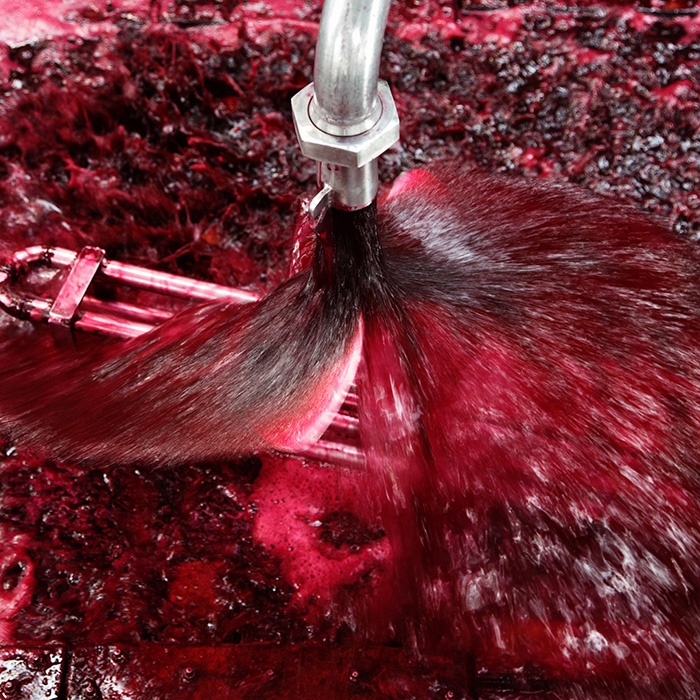Popular in pink: how to make rosé
Author: Berry Bros. & Rudd

Rosé starts from red grapes: here being pumped over as they begin their fermentation. Photograph: Jason Lowe.
Pink wine has become much more popular in recent years. Gone are the days when the sole association with the word “rosé” was a certain mass-market, semi-sweet, gently fizzy, pink drink. These days, high-quality rosé is made all over the world and in a range of styles. So how exactly is it produced? There are two key methods.
The most obvious way – though this is generally not permitted in Europe – is to add a very small amount of red wine to a white wine. The exception to the ban is traditional-method sparkling wines (most notably Champagne). There was a proposal to make this method legal for still wines too, but it was hotly contested by producers in rosé’s spiritual home, southern France; they felt that this would undermine their own traditional method – the second way of making rosé.
This can be described most simply as a shortened version of red winemaking: the “skin contact” method. In red wine production, the skins and juice are left in contact with each other throughout the fermentation process: this extracts colour and tannin. Grape juice, even from red grapes, is colourless – hence the ability to use red grapes in Champagne.
In rosé production red grapes are also used, but there will only be one or two days’ skin contact, to give a small amount of colour and virtually no tannin (this tends to be extracted later on in the red-wine process). After this short period of contact, skins and juice are separated and fermentation continues as for a white wine.
A sub-type of the skin-contact method is known as “saignée” (the French saigner means “to bleed”). Rosé produced in this way could be described as a by-product of red winemaking. Sometimes winemakers wish to increase the skin:juice ratio in their red wine fermentations to augment the colour and tannin levels, so they remove a small amount of juice in the initial stages of the fermentation. This, having had only a short period of skin contact, is pink and so will be fermented separately to make a rosé. A classic example is pink Sancerre, typically a by-product of red Sancerre production where winemakers want to bump up the colour and tannin levels of wine from the thin-skinned Pinot Noir grape.
SOME ROSÉS TO TRY ON A SUMMER’S AFTERNOON:
- Provence: the long-standing home of dry, pale rosés to match seafood
- Sancerre Rosé: crisp, light, mineral
- Navarra Rosado: Spanish pink made from Garnacha (Grenache)
- New World pink wine: from many different grapes; look out for Shiraz ones from Australia or Malbecs from Argentina
Browse our range of rosé on bbr.com.


